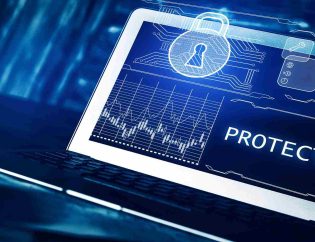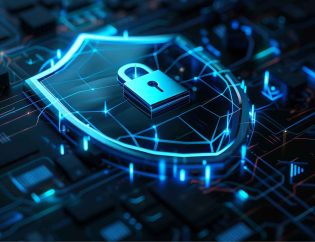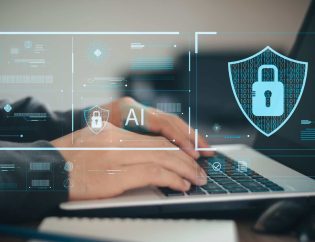
Introduction
In today’s digital world, understanding what an endpoint in cyber security is has become critical for organizations aiming to protect their data and networks. An endpoint is any device that connects to a network, such as computers, mobile devices, or even IoT devices. Each endpoint represents a potential entry point for cyber threats, making endpoint security a top priority in cybersecurity strategies. This article covers what does endpoint mean in cyber security, explores its importance and explains the purpose and components of effective endpoint security.
Endpoints in cybersecurity are key access points that need protection. With solutions like multi-factor authentication and encryption, businesses can secure these vulnerable spots against cyber threats. #CyberSecurity #EndpointProtection
— Hyper Secure (@HyperSecure) November 12, 2024
What is an Endpoint in Cyber Security?
An endpoint in cyber security refers to any device that connects to a network, acting as both an access point for users and a potential entry point for cyber threats. In a business environment, endpoints can include various devices:
Laptops and Desktops
Smartphones and Tablets
Servers and Workstations
Internet of Things (IoT) Devices like cameras and sensors
Endpoints connect to the network, allowing users to access data and resources. However, these devices also create opportunities for cybercriminals to exploit vulnerabilities if left unsecured.
Understanding what is endpoint in cyber security provides the foundation for creating an effective security strategy, as these devices must be protected to maintain network security.
Why Are Endpoints Important in Cyber Security?
Endpoints play a crucial role in cybersecurity because they are vulnerable points within a network. Each device that connects to the network represents an access point for potential cyber threats, making it essential to secure them. If endpoints are not adequately protected, attackers may exploit them to gain unauthorized access to sensitive data or disrupt operations.
Key Reasons Why Endpoints Are Critical:
High Target Potential:
Endpoints are commonly targeted by phishing, ransomware and malware attacks.
Expanding Number of Devices:
With the rise of remote work and IoT, the number of endpoints has increased, broadening the attack surface.
Human Factor:
Many endpoint-related breaches result from user behavior, such as using weak passwords or clicking on suspicious links.
By focusing on endpoint security, organizations can significantly reduce these risks, ensuring a safer digital environment for their data and operations.
Common Threats to Endpoints:
Phishing and Social Engineering:
Users may be tricked into revealing information or clicking malicious links.
Malware:
Malicious software can infect devices, compromising data and spreading across the network.
Data Theft:
Unsecured endpoints may allow attackers to steal sensitive business or customer information.
Thus, securing every endpoint in cyber security is vital for protecting an organization’s data and operations.
What is the Purpose of Endpoint Security?
The primary purpose of endpoint security is to protect devices within a network, safeguarding against threats like malware, data theft and unauthorized access. Endpoint security solutions not only protect individual devices but also secure the entire network, ensuring that only authorized users have access to sensitive data.
Core Purposes of Endpoint Security:
Protecting Sensitive Data:
Endpoint security prevents unauthorized access to sensitive information, maintaining data confidentiality.
Preventing Malware and Ransomware Attacks:
Endpoint security tools identify, isolate and remove malware to prevent its spread.
Ensuring Compliance:
Many industries have regulatory requirements for data protection; endpoint security helps organizations meet these standards.
Implementing robust endpoint security provides businesses with a defense system that guards data, maintains compliance and supports operational continuity.
Purpose-Driven Features:
Access Control:
Controls who can access specific data, reducing the risk of data leaks.
Data Encryption:
Ensures that data is unreadable to unauthorized users, securing information both at rest and in transit.
Real-Time Threat Detection and Response:
Detects and neutralizes threats before they can compromise the network.
Each of these features is integral to protecting endpoints in cyber security, allowing businesses to operate safely.
Types of Endpoints in Cyber Security
In the field of cybersecurity, endpoints vary in type, each posing unique risks and requiring specific protection measures. The most common types of endpoints in cyber security include:
User Devices:
These are laptops, desktops and mobile phones commonly used by employees for daily work.
Servers:
Servers store and manage sensitive data and applications, making them high-value targets for attackers.
IoT Devices:
Internet of Things (IoT) devices, such as smart cameras, sensors and connected devices, are particularly vulnerable due to limited security protocols.
Types of Endpoints and Their Security Requirements
| Endpoint Type | Examples | Security Requirements |
|---|---|---|
| User Devices | Laptops, Desktops, Smartphones | Access Control, Encryption, Anti-Malware |
| Servers | Database Servers, Application Servers | Advanced Threat Detection, Continuous Monitoring |
| IoT Devices | Smart Cameras, Sensors, Wearables | Network Segmentation, Regular Updates, Strong Password Policies |
Knowing these types of endpoints in cyber security helps organizations target security measures appropriately.
Key Components of Effective Endpoint Security
Effective endpoint security is built on several key components that together create a robust defense system against cyber threats. The most essential components include:
Multi-Factor Authentication (MFA):
MFA adds an extra layer of security by requiring users to verify their identity with two or more factors, such as a password and a code sent to their mobile device.
Data Encryption:
Encryption ensures that data remains secure, making it unreadable without the decryption key.
Behavioral Monitoring:
This technology tracks user behavior on endpoints to detect unusual activity that may indicate a security threat.
Essential Endpoint Security Features:
Access Control:
Limits data access to authorized users only, minimizing the risk of unauthorized access.
Real-Time Threat Detection and Response:
Constantly monitors endpoint activity to quickly identify and respond to potential threats.
Patch Management:
Keeps software updated to close vulnerabilities, reducing the chances of cyberattacks exploiting outdated systems.
By implementing these components, endpoint security provides comprehensive protection for each endpoint in cyber security. These elements help create a proactive security posture that protects devices and data from threats.
Customer Testimonial
“Hyper Secure’s endpoint security solution has drastically improved our network security. With centralized management and real-time monitoring, we have peace of mind knowing our data and endpoints are secure.”
Conclusion: How Hyper Secure Can Help
Hyper Secure, a leading Endpoint Security Company, provides comprehensive cybersecurity solutions to protect your network. Our advanced tools include multi-factor authentication, data encryption and continuous threat detection, ensuring each endpoint remains secure. Let Hyper Secure enhance your endpoint security framework, giving your business the confidence to operate safely and securely in today’s digital landscape.
FAQs
Q1: What does endpoint mean in cyber security?
A: An endpoint in cyber security refers to any device that connects to a network, serving as a potential entry point for cyber threats.
Q2: What is the purpose of endpoint security?
A: Endpoint security protects devices from cyber threats, safeguarding the network from unauthorized access and data breaches.
Q3: What are common types of endpoints?
A: Common endpoints include user devices (like laptops and smartphones), servers and IoT devices such as cameras and sensors.
Q4: How does endpoint security prevent data theft?
A: It uses tools like encryption, access control and threat detection to protect sensitive data from unauthorized access.
Q5: What is endpoint management in cyber security?
A: Endpoint management involves monitoring and managing all network-connected devices to ensure compliance with security policies.








